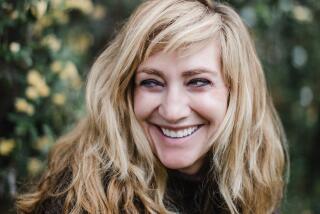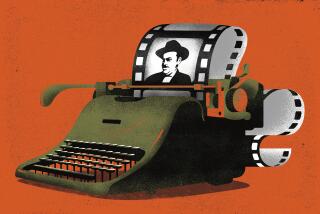DISCOVERIES
The Life Room
A Novel
Jill Bialosky
Harcourt: 340 pp., $24
LIKE Michael Cunningham’s “The Hours” echoing “Mrs. Dalloway,” Jill Bialosky’s new novel has a literary ghost rattling around in its walls. Anna Karenina haunts “The Life Room.” Eleanor Cahn, a literature professor with a surgeon husband and two small sons, is torn in too many directions. When the novel opens, she’s racked with guilt after agreeing to give a paper on Tolstoy at a conference in Paris. There, every possible romantic distraction confronts her: old boyfriends, close professional relationships, memories of lost loves. The roar in her head is deafening. A painter for whom she once modeled took her apart, body and soul; a childhood boyfriend with a precarious personality (setting fire to the playhouse was one of his many cries for attention) reappears to tempt and humiliate her. Children and marriage fade in the distance. Instead of a single Vronsky, Eleanor faces several. Her resolute self-destruction, with love the prime weapon, gives this novel the feel of an oncoming train.
--
Red Rover
A Novel
Deirdre McNamer
Viking: 264 pp., $24.95
“AND as the sky began to lighten into the lilacs and the pinks. . . the bony prairie, dotted here and there with an oil well, scraped and frank, became something undulating and out of time.” There’s nothing like a western novel, full of sky and landscape, to pull a reader out of the confined emotional space of the urban kind. As youngsters, Neil and Aidan Tierney rode hard across the Montana prairie. When World War II comes, Aidan goes to Argentina as a spy and Neil to Saipan as a pilot. Back home, Aidan dies mysteriously, setting his brother on a search. McNamer can sum up a character in a few words: “The Old Man found all his answers in details, and that trait, combined with an essential woundedness, made him a connoisseur of intricate and protracted revenge.” Her writing has a unique, aboriginal rhythm: “He put his forehead to the steering wheel. Dry-eyed, he rested there a few minutes. And then he drove the few blocks to the house of the bereaved. Where he stood with them in a small room with drawn drapes. . . . The gas heater in the front room ticked. There was a table with a white cloth and plates of cookies and a pot of coffee. Two silent women, the attendants who materialize in these situations, poured coffee and murmured and waited for a chance to replenish something.” You can almost hear the ticks, the intake of breath; it’s thrilling to find a writer you can hang your hat on.
--
Learning to Fly
A Writer’s Memoir
Mary Lee Settle
W.W. Norton: 224 pp., $24.95
TAKING up where her 1998 memoir, “Addie,” left off, Mary Lee Settle grows up during the Depression (“dignified mothers crying in their bedrooms behind closed doors we didn’t dare enter after telephone calls we knew were demands for payment from the grocery store”). She marries, moves to Toronto, has a baby, returns to New York to try making it as a model and actress. When war comes, she moves to London to write for the U.S. Office of War Information. In 1945, she’s back, at Harper’s Bazaar. Such writers as James Agee gather in her apartment. “[W]e tend to protect ourselves with false nostalgia,” she writes of her 15 minutes of fame. “Once there were better reviewers. Once there was grace and honor in publishing. This is nonsense. There never was. . . . Better to be sustained by arrogance and curse the night than descend to mournful self-defense. . . .”
--
More to Read
Sign up for our Book Club newsletter
Get the latest news, events and more from the Los Angeles Times Book Club, and help us get L.A. reading and talking.
You may occasionally receive promotional content from the Los Angeles Times.






